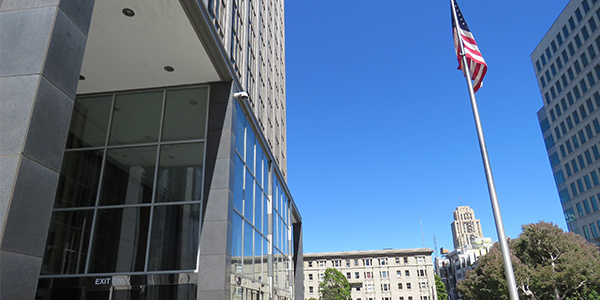Attorneys began debating the merits of Pacific Gas and Electric’s reorganization proposal Wednesday during the final days of the utility’s 16-monthlong bankruptcy case before Judge Dennis Montali in San Francisco.
“I’m prepared to shut up and listen for your argument,” Montali told the lawyers participating in the hearing via Zoom video. Dozens of attorneys were scheduled to deliver statements Wednesday through Friday.
PG&E’s lead attorney Stephen Karotkin made the first argument. He said PG&E’s plan resulted from months of “hard-fought, good-faith” negotiations that led to agreements with all the major parties in the case, including creditors, insurance companies and the victims of major wildfires sparked by utility equipment in 2015, 2017 and 2018.
An estimated $30 billion in liabilities from those fires — including the November 2018 Camp Fire, the deadliest in state history — caused PG&E to file for bankruptcy in January 2019.
“The plan before you today has the overwhelming support of the fire victims in addition, your honor, to the support of the governor’s office [and the California Public Utilities Commission],” Karotkin told Montali. “All those approvals and support serve to ensure expedited distributions to fire victims, and that, your honor, is the principal goal that these debtors have expressed since these cases were commenced last January.” (See CPUC Approves PG&E Bankruptcy Plan.)
Karotkin warned the judge that if he doesn’t approve the plan, it could delay payments to fire victims for years. It would also prevent PG&E from taking part in a state fund to insure it against future wildfire liabilities. PG&E must exit bankruptcy by June 30 to participate in the wildfire fund established last year by Assembly Bill 1054.
Until Wednesday, a dispute between PG&E and the case’s official Tort Claimants Committee had threatened to derail the case. But the TCC and PG&E filed court papers before the hearing saying they had resolved the committee’s objections to provisions in the Chapter 11 plan, which the committee had argued could have hampered lawsuits against the utility for post-bankruptcy activities. PG&E contended the provisions were commonplace in bankruptcy cases but agreed to remove them.
One creditor group, consisting of state public employee retirement systems that bought PG&E shares, continues to oppose the reorganization proposal. It is pressing a securities fraud action against PG&E, saying it was deceived about potential fire liabilities and the resulting devaluation in PG&E stock.
Karotkin told Montali the opponents are subordinate shareholders whose opposition is outweighed by the support of the majority of PG&E’s creditors.
Some fire victims still oppose the plan. They argue victims could be shortchanged because PG&E plans to fund a $13.5 billion victims’ trust with $6.75 billion in company stock, which could end up being worth less when the utility emerges from bankruptcy. Some of the self-represented fire victims are among those scheduled to argue before Montali. (See Skeptics Get Last Chance to Sound off on PG&E Plan.)




